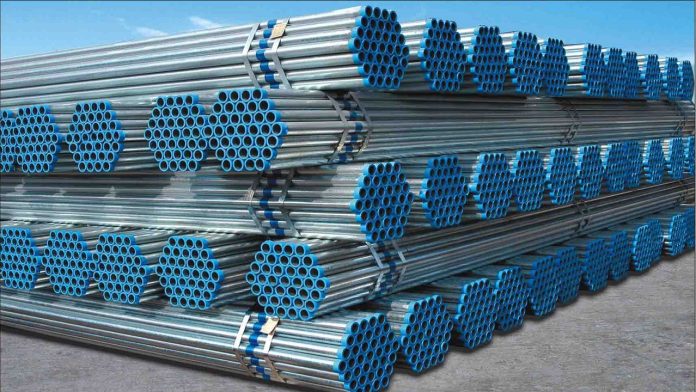Different sectors, including oil and gas and construction, utilize carbon steel pipes. Engineers utilize size specifications to ensure the correct pipe is selected. The specifications provide the diameter and the thickness of the pipes’ walls. Tuspipe offers the following characteristics in pipes, making it straightforward to ensure projects are both economical and safe. The three key words are used most commonly: schedule, NPS, and Carbon steel pipe diameters. Everybody who deals with pipes should be familiar with them.
What Pipe Diameter Means
The space from one outer surface to the other is the thickness of a steel pipe. The name given to this is the outer diameter or OD. The OD always takes into consideration the pipe wall. The inner diameter or ID is taken to understand the volume of space inside the pipe. ID is the wall thickness of the OD. This can be demonstrated by a 6-inch outside diameter pipe having an outer thickness of 0.25 inches and an inside diameter of 5.5 inches. OD is represented in comparison tables, and ID is the quantity of liquid or gas that may flow through.
What NPS Means
NPS stands for Nominal Pipe Size. It is a number that represents the nominal size of the pipe. NPS is widely used in North America. In small pipe sizes, from 1/8 inch to 12 inches, the NPS does not equal the actual OD. In large-sized pipes, over 14 inches, the NPS is identical to the OD. An example of this is a 2-inch NPS (National Pipe Straight) tagged pipe with a 2.375-inch outside diameter. It’s not precise, but close. This is done to prevent planning and construction errors.
What Schedule Means
A pipe schedule refers to the thickness. The two most commonly used are Schedule 40 and Schedule 80. The higher the better the wall. The thicker walls can support more pressure and are stronger, but they make the pipe heavier and are more costly. A 2-inch schedule 40 pipe with a 0.154-inch wall and a schedule 80 with a 0.218-inch wall are some examples. Schedule 80 is the same outside diameter but with a reduced inside area.
Normal Pipe Sizes in Millimeters and Inches
The diameter of the carbon steel pipe can be given in millimeters and inches. Tuspipe provides a size chart with units. This is particularly convenient for handling international projects. Nominal sizes provide simpler inter-system matching of pipes.
Measuring Pipe Diameters
A pipe is easily measurable, but it should be measured carefully. For tiny pipes, the use of a caliper can provide the OD. The OD can be determined by measuring the circumference of big pipes with a tape and then dividing by 3.14. The OD can then be known, and the ID discovered. Big pipes of 12 inches in diameter to 36 inches are utilized in heavy-duty uses such as oil and gas transmission, industrial drainage, and municipal water supplies. The measurements may then be compared against a standard chart to find the NPS number.
Small, Medium, and Large Pipes
Carbon steel pipes come in a wide range of sizes, ranging from very small to very large. The medium pipes of sizes 3 inches to 10 inches are employed to construct water supply and heating, cooling systems. High-heat or high-pressure applications will require thicker walls (Schedule 80 or thicker).
Key Factors When Choosing Pipe Size
The selection of pipe size will be based on several factors. One of these is the requirement for liquid organ flow. A larger pipe will transport more liquid or gas compared to a smaller pipe. Material is also a factor. Carbon steel is cheap and has good strength, but in this kind of project, where rust is an issue, stainless steel can be used. Cost also plays a factor. A Schedule 40 carbon steel pipe that has the same diameter can be compared with a Schedule 80 stainless steel pipe. Pressure and temperature also play a factor. The standards enable customers and engineers to select the correct pipe based on safety, flow, and cost.
General Pipe Lengths
The carbon steel pipes are typically 20 feet or 40 feet, or 6 meters or 12 meters in length. Special orders can also be produced in extraordinary lengths. This is one of the capabilities to meet the requirements of various industries.
Conclusion
Carbon steel pipes also have their own set of rules for diameter, NPS, and schedule. The overall diameter is the outer diameter. NPS designates a standard name to the pipe, but it does not always coincide with the OD. The schedule number establishes the schedule yield and thickness. Tuspipe provides carbon steel pipes of various sizes, ranging from 1/2 inch to 36 inches, of schedules 40, 60, 8.0, and 160. The specifications allow engineers and customers to choose the appropriate pipe for the purpose of safety, flow, and cost. Building and industrial projects become increasingly challenging when such words are familiar.









